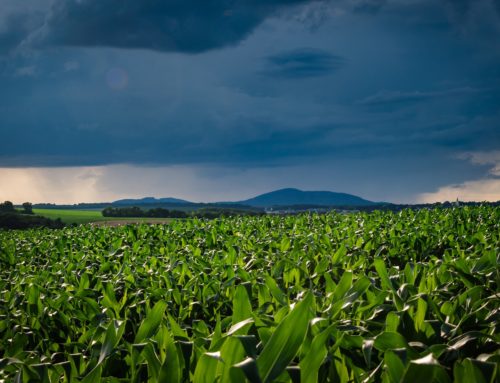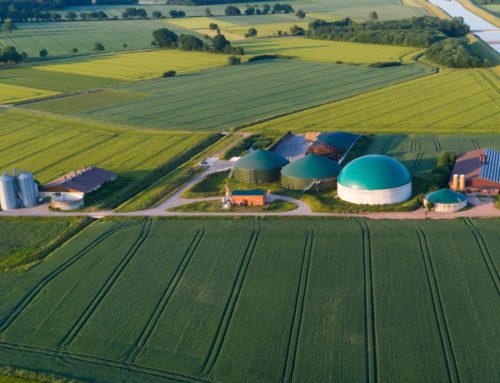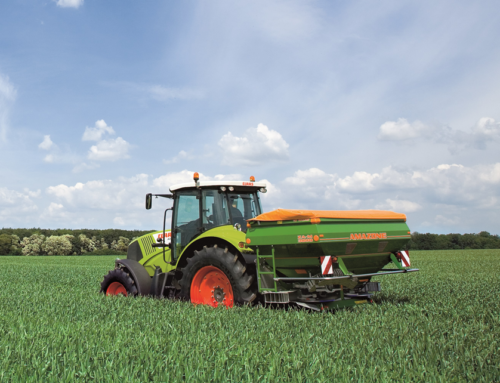Agricultural weather and the dependence of agriculture
Agricultural success is dependent on sun, rain, wind and snow. The attempt to gain security in planning and decision-making on the basis of recurring weather conditions was initially expressed in the form of country lore. This formed the quintessence of the agricultural experience by observing weather phenomena all year round and relaying regular occurrences. The introduction of specific indications meant that agricultural measures could be better planned.
The weather is only one aspect. It describes the current state of the atmosphere at the respective location and has a direct influence on plant development. On the other hand, the climate of a particular location is the entirety of all weather conditions over a longer period of time (at least 30 years). It is a crucial factor in the productivity of the location. Atmospheric conditions, in turn, describe the prevailing character of the weather over a few days. The weather is hugely significant for medium-term planning.
Trends are currently emerging which make agricultural work more unpredictable than ever before. Extreme weather conditions such as drought, hail, storms, frost or continuous rain have increased in the last 20 years and led to strong fluctuations in the harvest.
Since 1961, a generally earlier start to the vegetation cycle has been observed, a fact that is associated with increasing average temperatures. Plants now start growing earlier than in previous observation cycles. This can be seen, for example, in the fact that winter wheat (regardless of variety) is sprouting 14 days earlier. Or in the earlier flowering of apple trees and rapeseed, which are blooming about 20 days earlier than they did 50 years ago. The same applies to maize: since 1970 this fodder crop can be ordered around a week earlier and is ripening much faster.
The number of frost days (daily minimum: < 0°C) per year has successively declined since 1961. Late frosts will also be significantly less frequent in the future. In combination with an earlier start to vegetation, sensitive growth stages may occur more frequently in periods of late frost. Milder winters lead to an increased spread of fungi, viruses and insect pests, and thus to the increased use of plant protection products. Conversely, the number of hot days (daily maximum: > 30°C) has increased in the past 60 years. According to calculations, the number of hot summer days will triple or quadruple by the end of this century compared to the period 1961 to 1990.
From sowing to harvest with the agricultural weather forecasts
Growth and yield levels are directly dependent on weather and atmospheric events, which also determine what field work can be carried out. The weather at the respective location influences the time of sowing and harvest. There is a limit to how much plant production can be further optimised by means of technical aids such as irrigation, crop protection, organic and mineral fertilisation, tilling etc.
In crop management, precise knowledge of the soil condition, in particular its passability, is required before sowing crops in order to avoid damaging compaction. In addition to field inspections, timely and up-to-date information on soil moisture content and weather developments — in particular precipitation and evaporation — is essential for cultivation according to good practice. This applies to all management measures in the field and on grassland.
Weather and atmospheric conditions also play a decisive role in harvesting. Here, farmers are directly dependent on how the weather progresses or on multi-day forecasts. This applies in particular to cereal and root crop harvesting, haymaking and silage preparation as well as the spreading of plant protection products. The later in the year individual crops are harvested — in autumn, for example, potatoes, sugar beets, maize and field vegetables — the more important the longer-term forecasts of soil moisture content as an indication of the passability of the soil. Knowledge of the soil moisture profile also helps to comply with regulatory requirements for fertilisation and tilling. This is because according to the German Fertiliser Ordinance, fertilisation is not allowed on flooded, water-saturated, snow-covered or frozen soil.
Not least, meteorological factors are also crucial for the implementation of plant protection measures. The issue here is whether excessively high wind speeds in combination with leaf wetness and humidity may lead to the pollution of neighbouring areas, biotopes or housing developments.

Weather forecasts for agriculture
Reliable weather forecasts are important for agricultural work. Agricultural meteorology makes an important contribution here — by supporting economically and ecologically relevant decision-making processes.
Agricultural meteorology should “provide the weather that is needed on the farm”. Behind this is the desire for reliable planning. In the short term, this can extend over the next few hours, which is important for haymaking and grain harvesting. Here it is important to know when rain or a storm front is approaching. Predictions of up to one week are required for cultivation planning. It is a matter of deciding whether the seeds can be sown or whether maintenance tasks and harvesting can be carried out at the right time. An optimal forecast can save money and even save the harvest. If forecasts are made over several weeks, fertilisers and pesticides can be applied more effectively in terms of quantity and time of application, because the temperature curve in conjunction with precipitation levels determines the release of the nitrogen present in the soil. Predictions over a growing season are also helpful for crop planning. They facilitate the choice of plant species or varieties and minimise the risk of crop failure. In short: the requirements for predicting agricultural weather cover the entire agricultural year.
Agricultural weather forecasts with 365FarmNet





